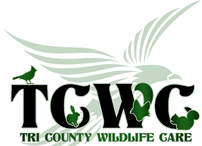Our Hearing
Did You Hear This?
Anyone who has dealt with hearing loss as they age and the misery and expense of finding the right hearing aid will be glad to hear there may be hope in the future. Researchers from the University Of Oldenburg, Germany have discovered that, unlike mammals, long-lived barn owls do not lose their acute hearing. Experiments that tied food rewards to different sound levels concluded that aging barn owls, even those that are 20 years or older, have hearing as good as young barn owls. Somehow owls are able to regenerate damaged nerves in their ears. Studies continue to figure out if uncovering the secret to this marvelous ability can translate to solving our own aging hearing loss. Saving Wildlife Saves Us!
Our Bones
Bone Up?
How is this possible? Bears hibernate all winter, not moving very much and yet they build stronger bones by spring. We mammals are told we have to move our bodies and jar our bones to keep them from getting porous and weak. Not fair! Not only that, but researcher Seth Donahue of Michigan Tech University, in his studies of bears and bones, discovered that hibernating black and grizzly bears grow stronger bones as they age, again unlike us. Work continues to discover what within bear biology will translate into preventing osteoporosis in humans. Saving Wildlife Saves Us!
Our Rates of Cancer
Gentle Giants Lead the Way
Elephants, being as huge as they are, have many more cells than we do. Since cancer is a disease where cells malfunction, then shouldn’t elephants be more prone? In reality, less than 5% of elephants die from cancer but for humans it’s a 25% mortality rate.
Scientists have discovered elephants carry 20 copies of a gene that safeguards cells. Humans only own 1. Researchers continue investigating if having many copies of this gene and how they operate may hold answers to preventing cancer for us all. Once again, wildlife genetics may lead the way towards human health. Saving Wildlife Saves Us!
Did You Hear This?
Anyone who has dealt with hearing loss as they age and the misery and expense of finding the right hearing aid will be glad to hear there may be hope in the future. Researchers from the University Of Oldenburg, Germany have discovered that, unlike mammals, long-lived barn owls do not lose their acute hearing. Experiments that tied food rewards to different sound levels concluded that aging barn owls, even those that are 20 years or older, have hearing as good as young barn owls. Somehow owls are able to regenerate damaged nerves in their ears. Studies continue to figure out if uncovering the secret to this marvelous ability can translate to solving our own aging hearing loss. Saving Wildlife Saves Us!
Our Bones
Bone Up?
How is this possible? Bears hibernate all winter, not moving very much and yet they build stronger bones by spring. We mammals are told we have to move our bodies and jar our bones to keep them from getting porous and weak. Not fair! Not only that, but researcher Seth Donahue of Michigan Tech University, in his studies of bears and bones, discovered that hibernating black and grizzly bears grow stronger bones as they age, again unlike us. Work continues to discover what within bear biology will translate into preventing osteoporosis in humans. Saving Wildlife Saves Us!
Our Rates of Cancer
Gentle Giants Lead the Way
Elephants, being as huge as they are, have many more cells than we do. Since cancer is a disease where cells malfunction, then shouldn’t elephants be more prone? In reality, less than 5% of elephants die from cancer but for humans it’s a 25% mortality rate.
Scientists have discovered elephants carry 20 copies of a gene that safeguards cells. Humans only own 1. Researchers continue investigating if having many copies of this gene and how they operate may hold answers to preventing cancer for us all. Once again, wildlife genetics may lead the way towards human health. Saving Wildlife Saves Us!


